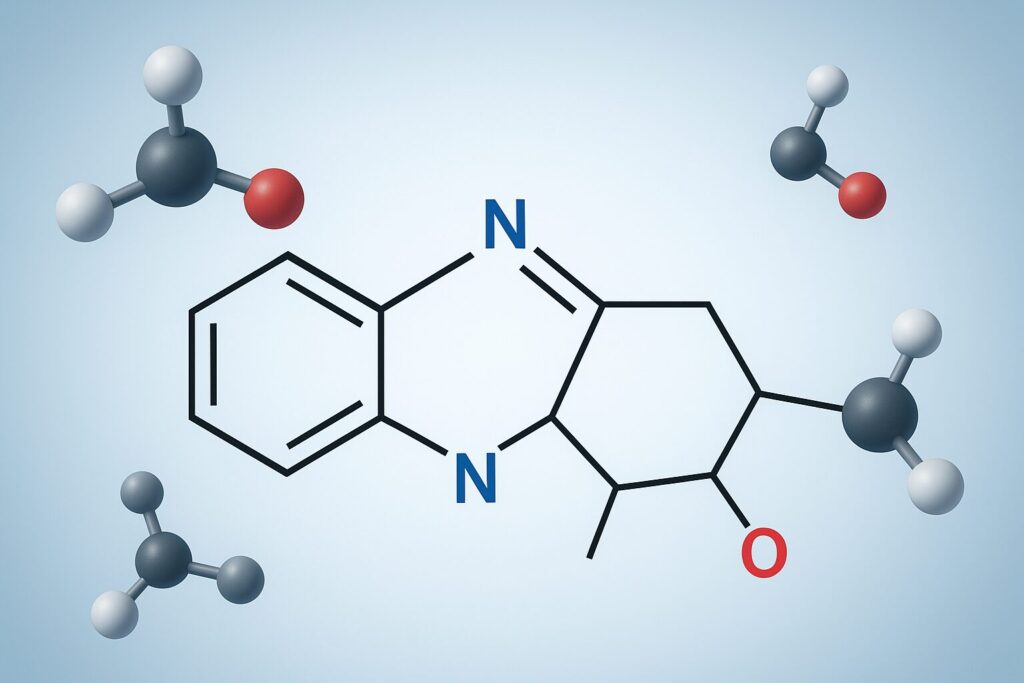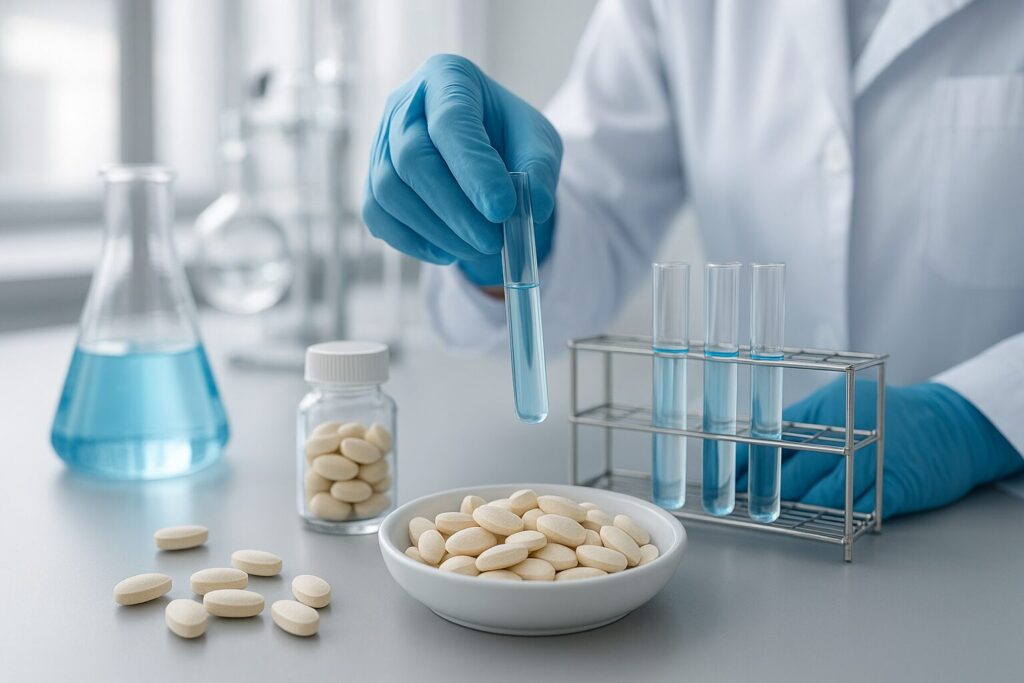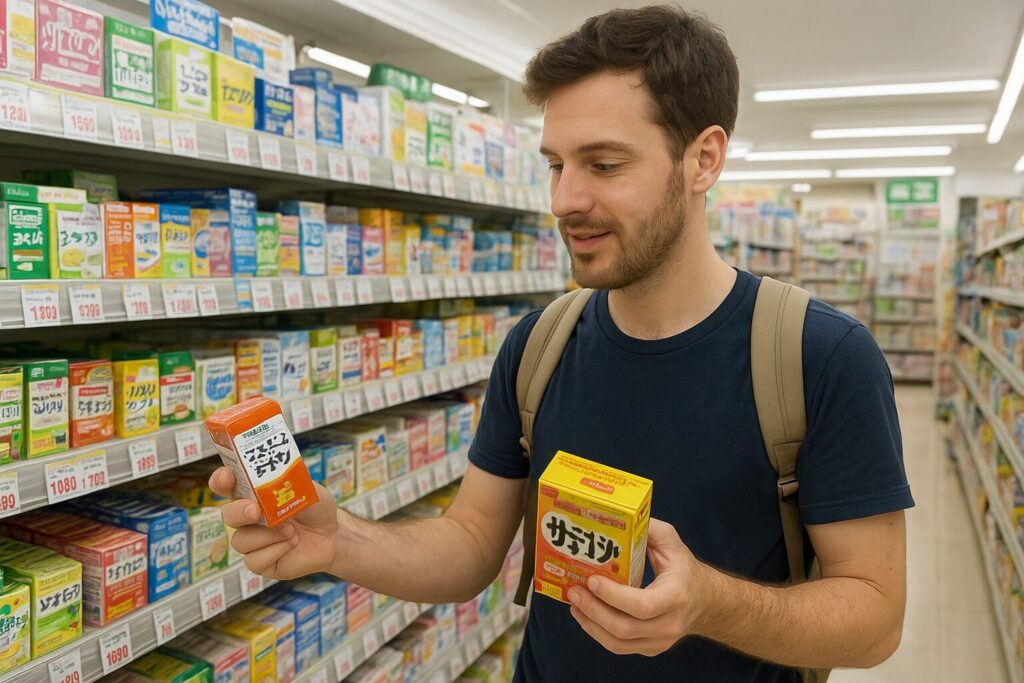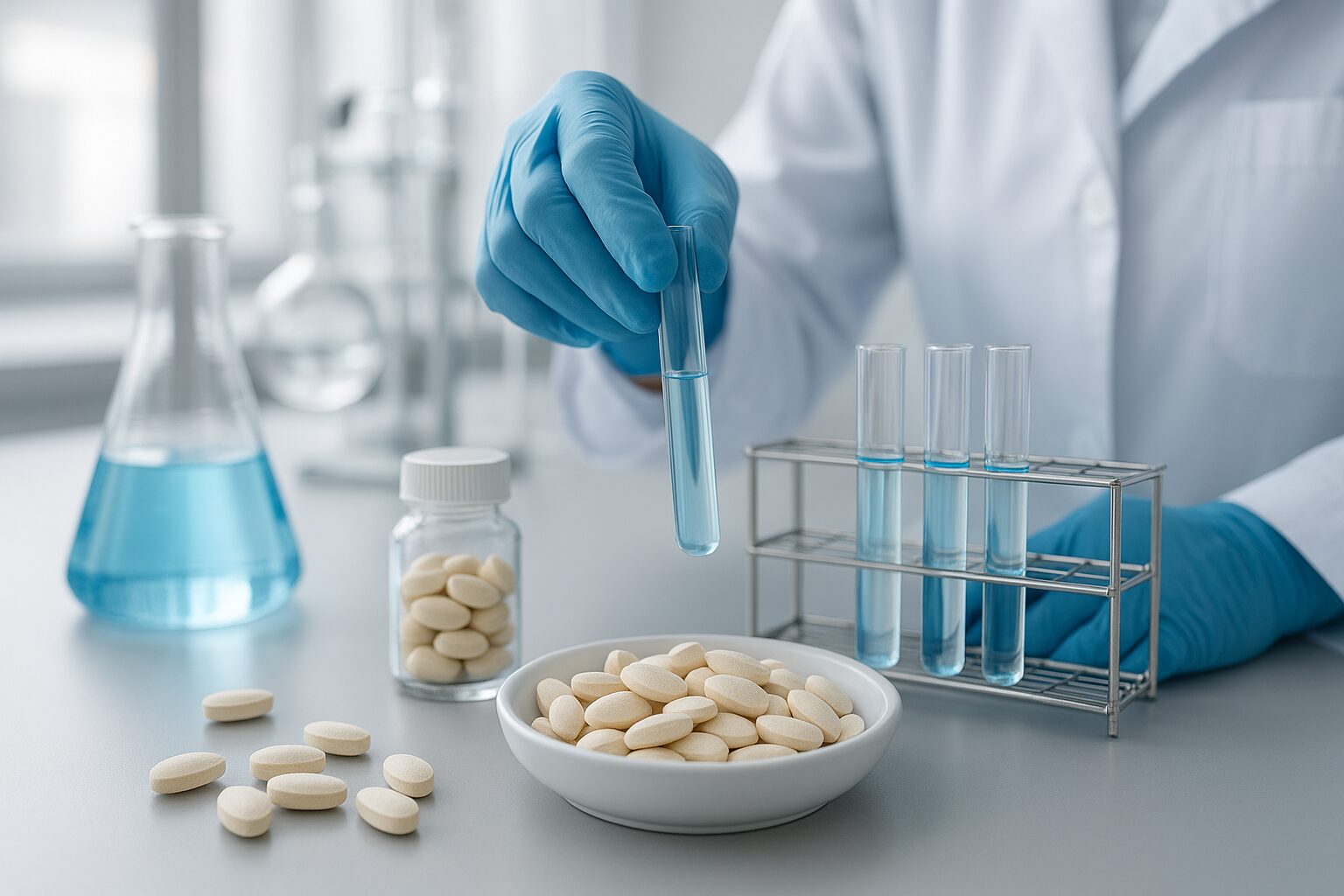What is Deazaflavin?
To put it simply, deazaflavin (5-deazaflavin) is a very expensive ingredient that has the effect of rejuvenating you when you take it.
It is said to have effects such as improving skin quality, darkening gray hair, and rejuvenating you.
It activates sirtuins (longevity genes) and mitochondria, essentially rejuvenating cells.
Although its structure is completely different, its effectiveness is said to be 40 times that of NMF, which has similar effects, and its workings are very similar.
For this reason, research is being conducted on it as a “next-generation anti-aging ingredient” and “an ingredient that surpasses NMN.”
What is 5-Deazaflavin?

Deazaflavin is a general term that primarily refers to 5-deazaflavin.
It is a type of vitamin B2 (riboflavin) that has had part of the fifth nitrogen (N) removed from the flavin structure, so it is called 5-deazaflavin, combining the fifth nitrogen (deaza) (deaza meaning to remove) and flavin.
Simply put, deazaflavin is a molecule with a slightly altered shape of vitamin B2.
What is ND1128?
ND1128 is a type of 5-deazaflavin. It is often described as a flavin enzyme with the aza-group N element in the fifth group removed, i.e., a 5-deazaflavin, but to be precise, it is one type of customized 5-deazaflavin and is currently considered the basic ingredient for 5-deazaflavins.
In other words, supplements labeled as TND1128 are capable of activating mitochondria.
Discovery of deazaflavin
Deazaflavin was first discovered and attracted attention in the 1970s.
At the time, European scientists were researching what would happen if the structure of vitamin B₂ (flavin) was altered.
To understand how flavin coenzymes (FAD and FMN) work in the body, researchers created artificial molecules that are similar to flavins but slightly different, and conducted comparative experiments. During this process, they wondered what would happen if they removed one nitrogen atom, leading to the synthesis of deazaflavin.
It was originally created for basic research as an “artificial coenzyme that mimics the function of vitamin B2,” but it was found to have better stability and electron transfer properties than expected, and gradually began to attract attention.

Discovery of deazaflavin in nature
In the 1980s, American researchers discovered a compound in nature that was very similar to deazaflavin.
Deazaflavin was known as an artificially created molecule, but in the 1980s and 1990s, it was discovered that soil bacteria and some microorganisms produce a special coenzyme called “coenzyme F₄₂₀,” which is very similar to the artificially created 5-deazaflavin. This is natural deazaflavin.
This was a very interesting discovery, showing that “mechanisms similar to those artificially devised by humans exist in the natural evolutionary process.”
What is NMF?
The ingredient “NMN (nicotinamide mononucleotide)” is a component that extends lifespan and invigorates mitochondria. It is a type of vitamin B3 that, when it enters the body, is converted into a substance called NAD⁺, which activates sirtuins. It has also been reported to improve glucose metabolism.
Why is deazaflavin better than NMF?
NMN is said to be difficult to preserve and improve, but research has shown that deazaflavin is easier to handle than NMN and has far stronger effects.
While NMN is converted into NAD+ in the body before acting on the sirtuin gene and mitochondria, 5-deazaflavin can act on the sirtuin gene and mitochondria in the body.
In fact, research has shown that its mitochondrial activation effect is several dozen times stronger than NMN, and its ability to activate the sirtuin gene (longevity gene) is several times stronger.
Fukuoka University has confirmed that TND1128, a type of 5-deazaflavin, has the effect of activating nerve cells and creating new synapses.
What is the sirtuin gene?
The sirtuin gene is also known as the “longevity gene” and is a gene that is closely related to lifespan and aging.
It helps repair DNA, activates cells, and helps prevent the body from aging and becoming ill.
In other words, if we can control the sirtuin gene, it may be possible to rejuvenate ourselves.
Research at the National Institute of Genetics has succeeded in freely changing the lifespan of yeast, gradually elucidating the mechanisms of human aging.
How to activate sirtuins
To activate the sirtuin gene, calorie restriction, moderate exercise such as walking, resveratrol administration, and NMN intake are all effective. However, deazaflavin can activate sirtuins more efficiently than NMF, so combining these can significantly promote the activation of the sirtuin gene.
The relationship between 5-deazaflavin and cancer cells
Cancer cells need to produce DNA in order to grow rapidly, and research has shown that some 5-deazaflavins bind to thymidylate synthase, an enzyme that produces thymidine monophosphate, one of the materials needed to produce DNA, and stop this enzyme from functioning.
Must buy in Japan
When traveling to Japan, supplements containing deazaflavin are one of the must-buy souvenirs.
When traveling to Japan, find a reliable Deaza supplement and a store where you can purchase it with confidence.
And if you want to buy deazaflavin supplements after returning home, we recommend that you look for a store that sells them to overseas customers while you are still in Japan.

Deazaflavin (suspicious) Deazaflavin TND1128 cosmetics Deazaflavin effects Deazaflavin supplements Deazaflavin (suspicious) Deazaflavin Hydro Hyper effects Deazaflavin side effects Deazaflavin reviews Deazaflavin weight loss Deazaflavin ingredients Deazaflavin NMN differences β-nicotinamide mononucleotide coenzyme F420 NAD+ nicotinamide adenine dinucleotide mitochondrial acetylation Deazaflavin fakes China USA
Any unauthorized reproduction of text and images published on this website is strictly prohibited.

